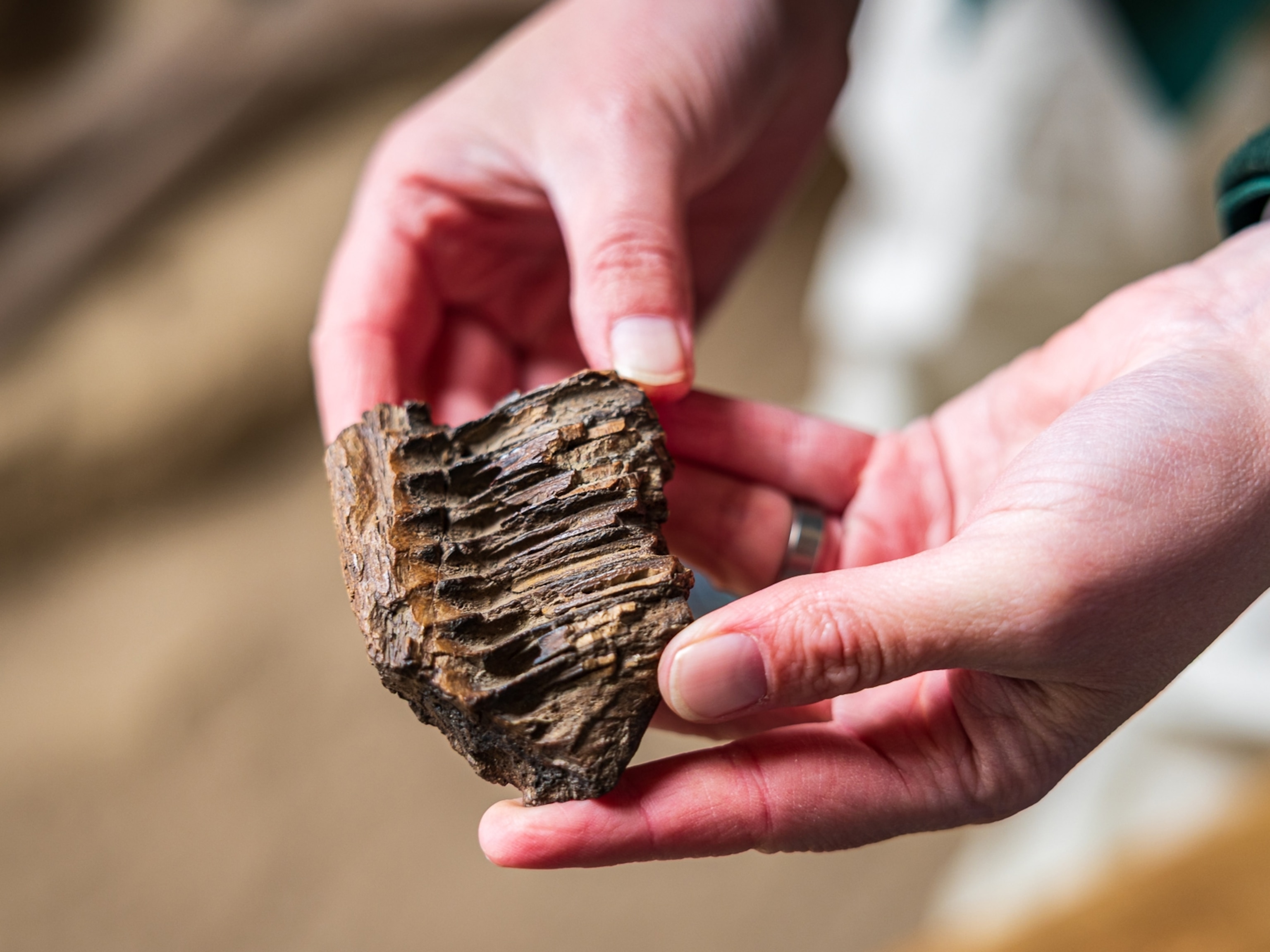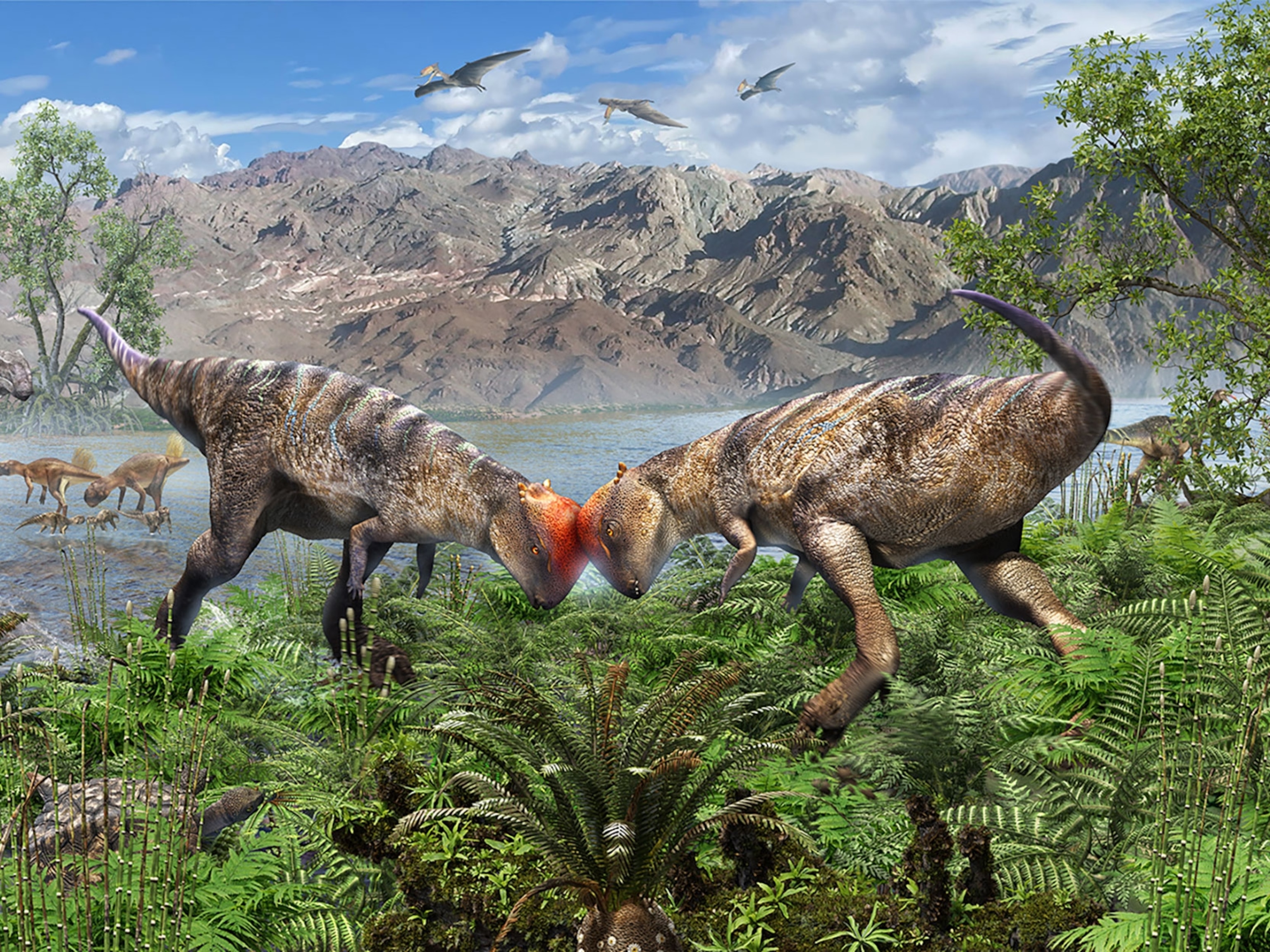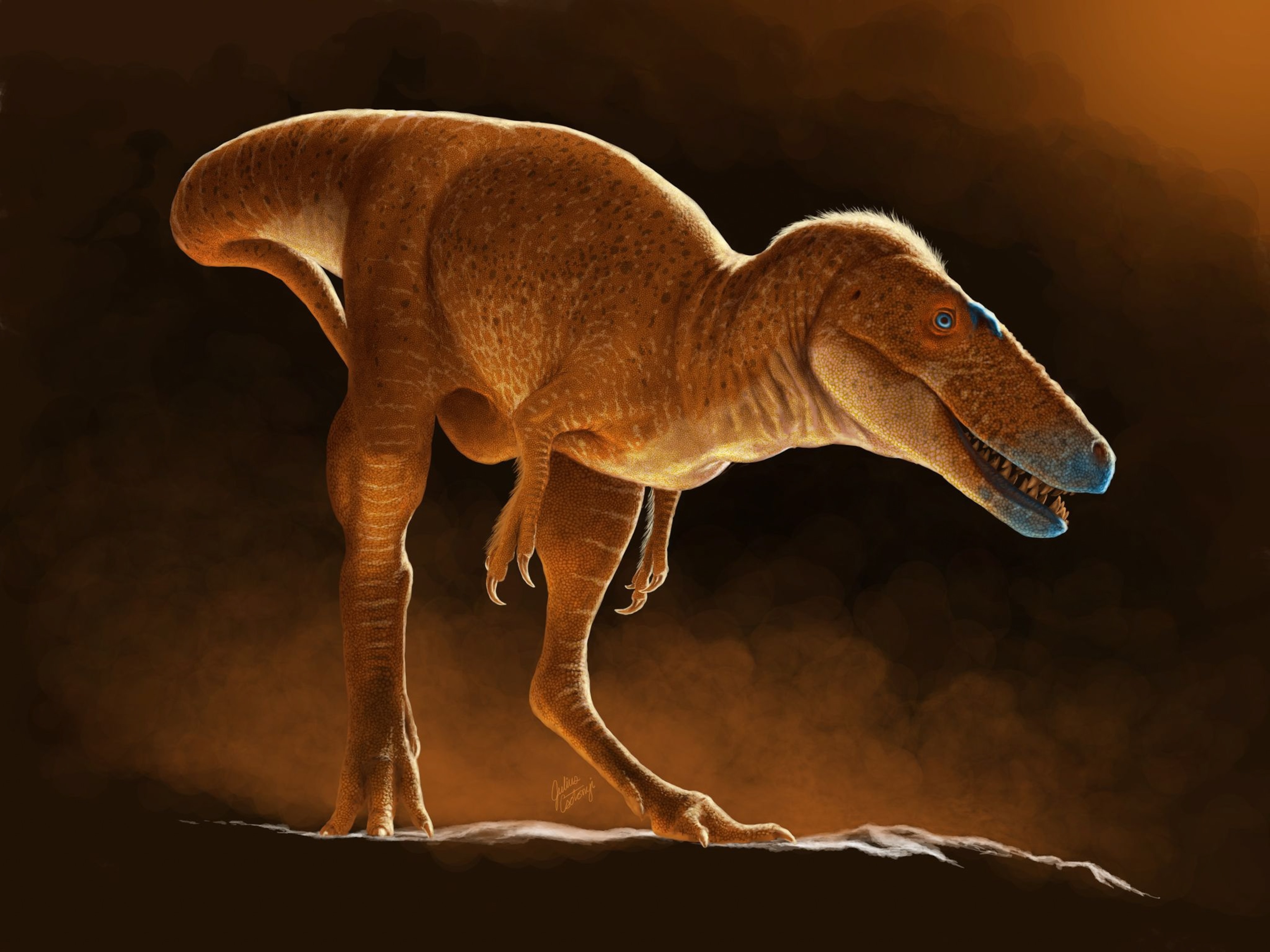Rare Triceratops Fossil Discovered at Construction Site
The fossil is millions of years older than Ice Age fossils typically found in the region.
During construction for a new fire and police station in the town of Thornton, Colorado, labor crews stumbled upon a rare find August 25: a triceratops skeleton.
The construction crew quickly alerted the Denver Museum of Nature and Science, and by August 28, Joe Sertich, the museum's curator of dinosaurs, confirmed that the fossil indeed belonged to a triceratops. Construction has since been halted so that museum staff can look for any remaining bones.
Many of the fossils found in this region can be dated to the Ice Age. Thus, it's not uncommon for paleontologists to unearth fossils from animals like mammoths and camels that once lived in North America. A triceratops, however, is a much rarer find. The fossil can roughly be dated to the Cretaceous period—roughly 66 million years ago. According to the city, most of the area is covered by commercial centers, and it's rare for crews to dig into the region's old rock.
"A lot of times these will be plowed up and they won’t be recognized,” Sertich said in a city press release.
"Whenever a construction site like this gets down to the right level, like it did here in Thornton, rocks that pre-date the extinction of dinosaurs, right before the dinosaurs go extinct, you have things like T-Rex and triceratops walking around the landscape, and so this construction site hit the right spot at the right time."
Triceratops are one of the most iconic dinosaur species and are commonly featured in movies like Jurassic Park. The species is easily recognizable by the three horns on its head and shield-like head plate. Previous fossil evidence has shown the plant-eating creature was massive, measuring as long as 30 feet and weighing four to six tons.
This isn't the first small town to receive attention for an accidental fossil find. Just this past July, a young boy discovered the fossilized remains of an ancient mammal known as a stegomastodon after he tripped over a protruding bone.
Thousands of fossils have been found in North America alone. The Paleobiology Database, a non-profit database of paleontological data, shows where fossils have been found around the world. Their data is collected in an interactive map that shows each fossil's discovery site.
For Thornton, the discovery represents an exciting new addition to the region's relics of the past. The skull is only one of three that has been found in the region. Once the skeleton has been safely extracted from the construction site, the Denver museum hopes to put it on display.
Sertich and the museum team are eager to study the remains more closely.
"I’m over the moon right now that this is a dinosaur fossil," he said.
Correction: A previous version of this article stated the fossil was found on July 31. Construction began on July 31, and the fossil was discovered on August 25.





